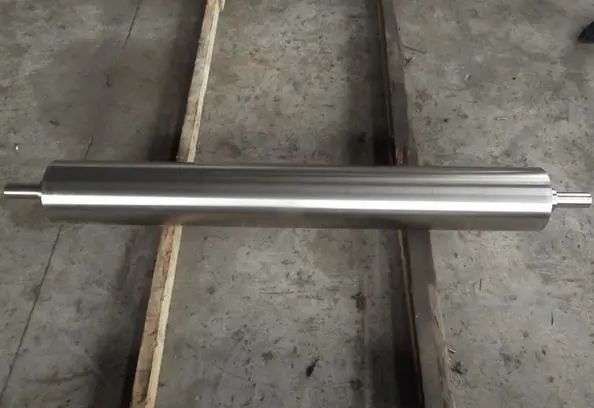Establishing a Regular Inspection Schedule
Determining Inspection Frequency
The frequency of stabilizer roll inspections is a critical aspect of maintenance planning and should be determined based on multiple influencing factors. One of the most significant elements is the operational conditions in which the stabilizer rolls are used. High-stress environments—such as those involving elevated temperatures, heavy mechanical loads, or aggressive chemical exposure—often accelerate wear and tear on equipment. These conditions increase the likelihood of component degradation, meaning more frequent inspections are necessary to detect early signs of damage or failure. In contrast, stabilizer rolls operating in less demanding environments, where temperatures and stresses are lower, may not experience the same rate of degradation. For such applications, inspection intervals can generally be extended without sacrificing performance or safety.
Operational factors that can influence inspection frequency include the load variations experienced by the rolls, the type of material processed (e.g., metals, ceramics, or plastics), the frequency of thermal cycles, and the environmental conditions (e.g., humidity, corrosive gases). For example, stabilizer rolls used in a furnace that operates under high cyclic loads with rapid temperature fluctuations may require more frequent checks to monitor thermal fatigue and mechanical wear. On the other hand, stabilizer rolls in continuous, steady operations with minimal thermal cycling may not need as frequent inspections.
Creating a Comprehensive Checklist
Developing a thorough inspection checklist ensures that all critical aspects of the stabilizer roll are examined consistently. This checklist should include items such as surface condition assessment, dimensional measurements, and specific tests for material integrity. By standardizing the inspection process, maintenance teams can effectively track changes over time and identify potential issues before they escalate into major problems.
Training Personnel for Accurate Inspections
Proper training of inspection personnel is crucial for obtaining reliable results. Staff members should be well-versed in the specific requirements of stabilizer roll inspections, including the use of specialized tools and equipment. Regular training sessions and knowledge updates help ensure that inspectors remain current with the latest techniques and industry standards, ultimately contributing to more accurate and effective examinations.
Visual Examination Techniques
Surface Condition Assessment
A thorough visual examination of the stabilizer roll's surface is the first step in any inspection process. Inspectors should look for signs of wear, corrosion, or damage such as cracks, pitting, or deformation. Particular attention should be paid to high-stress areas and regions prone to material fatigue. Advanced imaging technologies, including high-resolution cameras and endoscopes, can be employed to access hard-to-reach areas and document findings for future reference.
Identifying Wear Patterns
Understanding and recognizing typical wear patterns is crucial for assessing the condition of stabilizer rolls. Different operational environments can lead to unique wear characteristics, such as abrasive wear in mining applications or chemical corrosion in certain industrial processes. By identifying these patterns, inspectors can gain valuable insights into the roll's performance and make informed decisions about maintenance or replacement needs.
Documenting Visual Findings
Accurate documentation of visual inspection results is essential for tracking the stabilizer roll's condition over time. Detailed reports, including photographs and measurements, provide a comprehensive record that can be used for trend analysis and predictive maintenance. Implementing a standardized reporting system ensures consistency across multiple inspections and facilitates effective communication between maintenance teams and management.
Non-Destructive Testing Methods
Ultrasonic Testing for Internal Defects
Ultrasonic testing is a powerful non-destructive method for detecting internal flaws in stabilizer rolls. This technique uses high-frequency sound waves to penetrate the material and identify discontinuities such as cracks, voids, or inclusions. Ultrasonic testing is particularly useful for examining thick-walled rolls and can provide valuable information about the internal structure without compromising the integrity of the component.
Magnetic Particle Inspection for Surface Defects
Magnetic particle inspection is an effective technique for detecting surface and near-surface defects in ferromagnetic materials commonly used in stabilizer roll construction. This method involves magnetizing the roll and applying magnetic particles, which accumulate around discontinuities, making them visible under appropriate lighting conditions. Magnetic particle inspection is particularly useful for identifying fine cracks or other surface imperfections that may not be readily apparent during visual examinations.
Dimensional Measurements and Tolerances
Precise dimensional measurements are crucial for ensuring that stabilizer rolls maintain their specified tolerances throughout their operational life. Advanced measurement tools, such as laser-based systems and coordinate measuring machines, can provide highly accurate data on critical dimensions, including diameter, roundness, and surface finish. Regular dimensional checks help identify wear trends and allow for timely interventions to maintain optimal performance.
In conclusion, conducting regular inspections on stabilizer rolls is a critical aspect of maintaining efficient and reliable operations in various industrial sectors. By implementing a comprehensive inspection program that includes visual examinations, non-destructive testing, and precise measurements, operators can significantly extend the lifespan of their equipment and minimize unexpected downtime. The key to successful inspections lies in establishing a consistent schedule, utilizing appropriate testing methods, and maintaining accurate records of findings. As technology continues to advance, new inspection techniques and tools will further enhance our ability to monitor and maintain stabilizer rolls, ensuring their optimal performance in demanding industrial environments. For more information on stabilizer roll inspections and customized metal parts for various industries, please contact us at info@welongpost.com.




